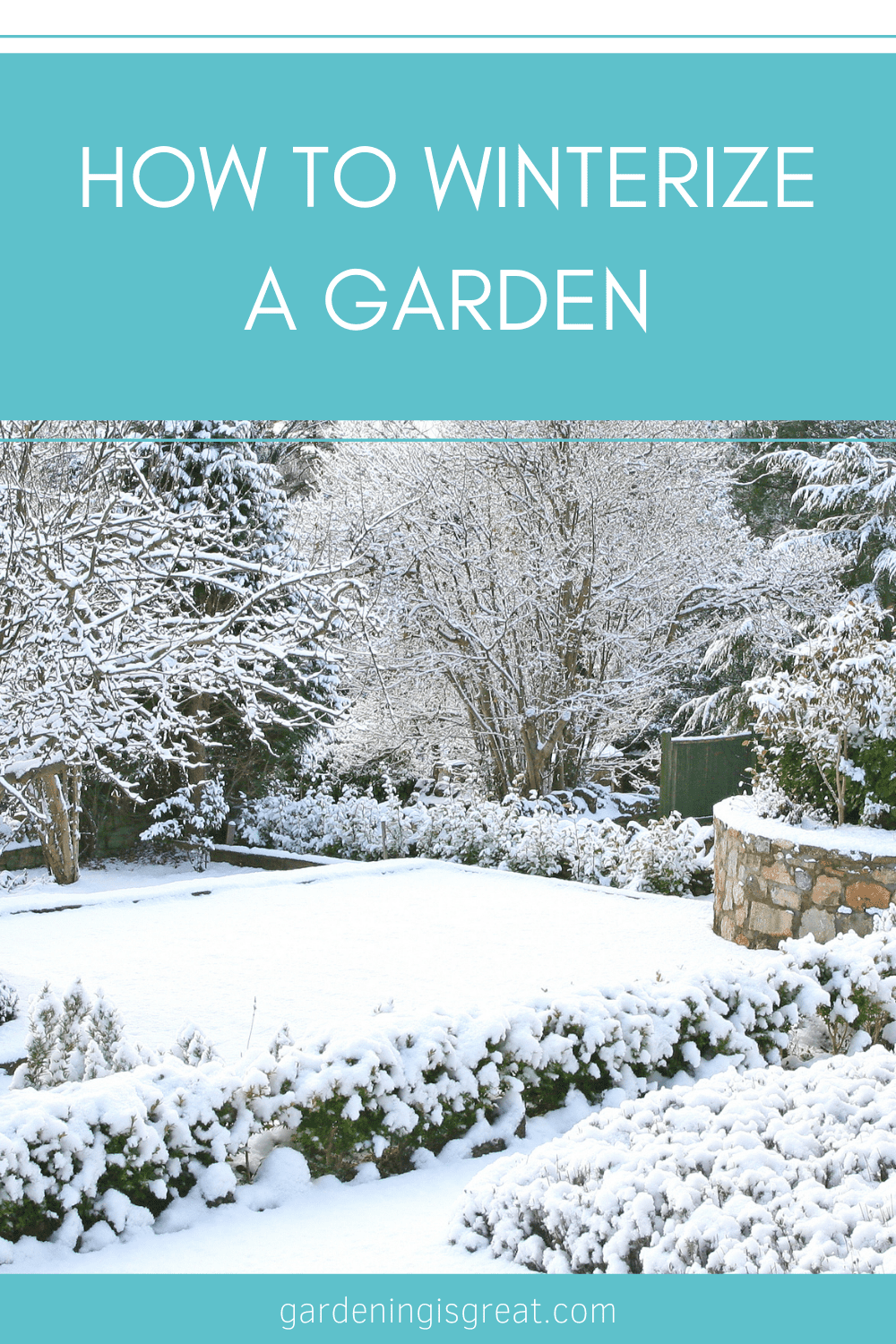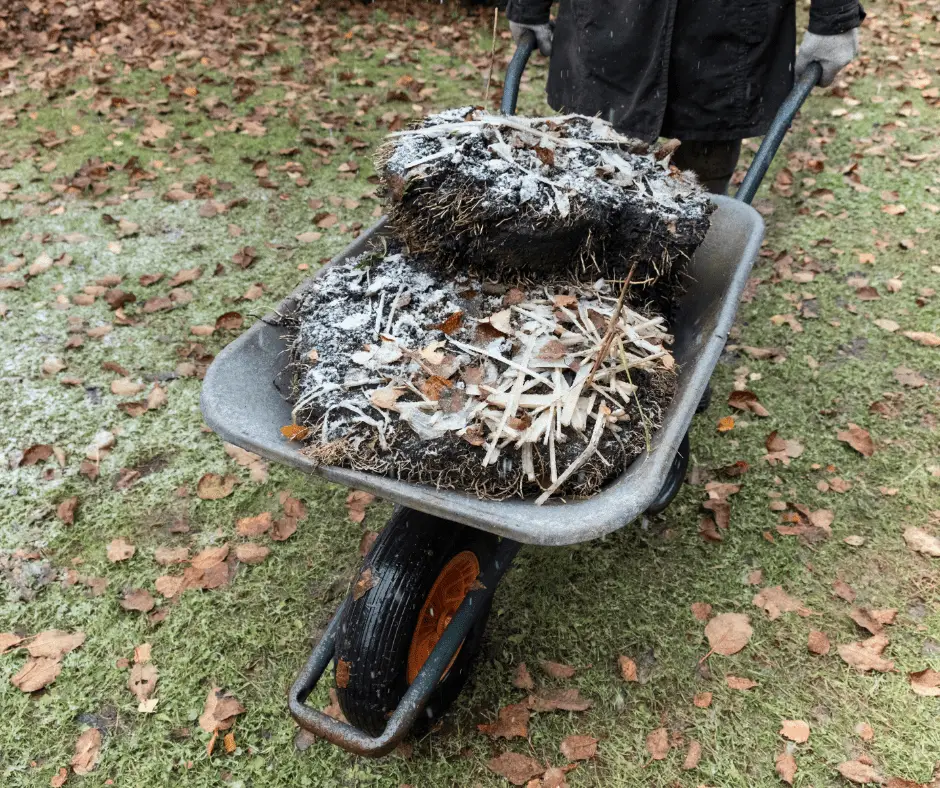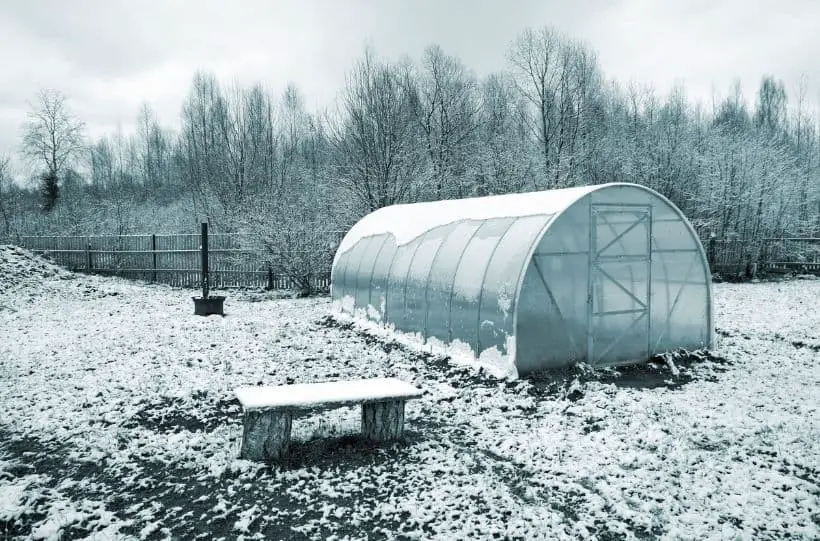How To Winterize A Garden
With winter on its way, it’s time to prepare your garden for the strong winds and frosty nights.
The time to begin winterizing a garden is during fall. Your annual plants have completed their life cycle, perennials are getting ready to become dormant, and it’s not too cold yet that you’re still motivated to maintain your garden.
Garden maintenance is a year-round task with each season bringing a different set of responsibilities to support your plant’s health whilst creating the outdoor space you desire.
Winterizing a garden requires specific tasks to be carried out before winter arrives that will help:
- Your perennials to survive during colder weather
- Your soil to retain its nutrients
- Your spring plants are given a chance to grow roots before lying dormant.
Continue reading this post so you can fully winterize your garden before the season is upon us.

What Is Winterizing A Garden?
Winterizing a garden simply means preparing your garden for winter. Winter is a harsh season and many plants in your garden are possibly not native to your country. This means that they aren’t resilient to cold climates and, if left, would perish during winter.
Hence, to ensure that your garden survives during colder temperatures, certain tasks need to be carried out during fall before the first frost arrives.
By putting in the effort to prepare now, also helps your garden for the following spring, where the bulbs that you plant will begin to grow, and the soil will be healthy to support plant life.
When Should I Winterize My Garden?
It is best to start winterizing your garden at the end of fall before the first frost sets on the ground. This is usually between November and December.
By waiting for this late in the year, it gives your annual plants and late blooming crops to finish their growing season.
The ground at this point also isn’t too cold to dig, making it easier to clear debris, old plants, and rotate the soil.
Another thing to consider is the plants you want to save for the following year.
These will need covering or moving indoors before the first frost. If left too late, they will begin to die with leaves, stems, and even the roots breaking from the frost and weight of ice.

How To Winterize A Garden?
Now we know what winterizing a garden is and when to do it, let’s take a look at what you need to do to prepare your garden for winter:
Annual Plant Removal
Annual plants, just as their name suggests, only last for one growing season. After which, their lifecycle ends and they just take space up in your flower beds.
Similarly, many crops also only last for one growing season such as pumpkins, lettuce, and peas.
When the season has ended and these plants have dried out, you can dig them up and remove them.
This makes space for spring-blooming plants, but also enables you time to adjust the soil as needed e.g. if it requires turning or more nutrients.
Clear Away Weeds
After each growing season, weeds have made their way in between your plants and can end up taking over your flower beds.
Once the growing season has ended, it’s the perfect opportunity to dig up and clear away the weeds. It will then be difficult for weeds to set in during the winter months and make it much easier to manage the following spring.
Provide Nutrients To Soil
Your soil needs time to recover between growing seasons. Nutrients often will need adding back into the soil to support new plants the following spring.
You can mix organic matter into your soil whilst digging and turning to ensure the soil is not compacted and allows for water drainage.
Organic matter is often referred to as ‘soil improver’ such as garden compost, animal manure, or lawn mowings. Different organic matter has different levels of nutrients so it is best to check first what your soil needs to match with the right type of organic matter.
Microorganisms found in the soil help to break down organic matter enabling plants to access the nutrients. During the winter, microorganisms process organic matter slowly. This provides nutrients for plants in the following spring.
Cover Soil
Covering your soil is essential in the winter to prevent heavy rains from leaching the nutrients. Without the right nutrients in your soil, your plants will not thrive.
You can cover your soil either with a physical cover such as horticultural fleece or, more commonly add mulch to the top of your soil.
Alternatively, consider planting winter crops that add nutrients to your soil.
For example, planting winter rye. Not only does winter rye protect your soil from the heavy rains and cold temperatures. They also support nutrient levels in your soil.
Winter rye has long roots that help to break up the soil to improve drainage, and also bring nitrogen levels from lower down in the soil towards the surface.
This helps create nitrogen-rich soil for the next plants that are planted the following spring after the rye has been removed.
Protect Delicate Plants
If you have delicate plants that are not native to an area exposed to colder weather, they need to be protected from the elements.
One way to do this is to carefully dig them up and replant them in a pot to bring indoors. This way they can still access the sunlight, but in a consistent, temperate environment away from the frost and cold winds.
If you do bring plants indoors, ensure not to place them near radiators where they can overheat and dry out. Also, provide them with a flow of air e.g. from a fan or slightly opened window.
Alternatively, if you have a greenhouse this is an excellent place to protect delicate plants from the winter weather.
For extra protection, insulate your greenhouse by adding bubble wrap on the inside of each glass panel.
This will help provide them with extra heat during cold weather. Inside the greenhouse, they are protected from frost and strong winds.
Plant Bulbs
Finally, to winterize your garden and prepare it for the following spring, plant your bulbs before the first frost.
Planting your bulbs in the fall allows them to grow their roots. Once their roots are in place, it gives them more security and stability during the winter months.
Your bulbs can lay dormant until the following spring when they are ready to flower and can provide an important food source for pollinators.

These six top tips will help you to winterize a garden. If you want your garden to be well-maintained during winter and your plants to survive in harsh weather, it is best to dedicate time to your garden in the fall.
By following these tips, your garden will be ready to thrive the following spring.
Take a look at these posts for more tips on maintaining your garden:
